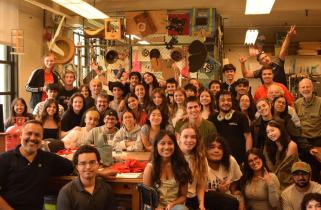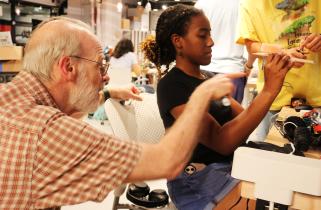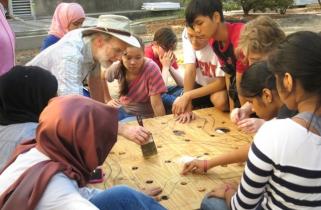Edgerton Center STEM Workshop for Deaf high school students doubles participation in year two
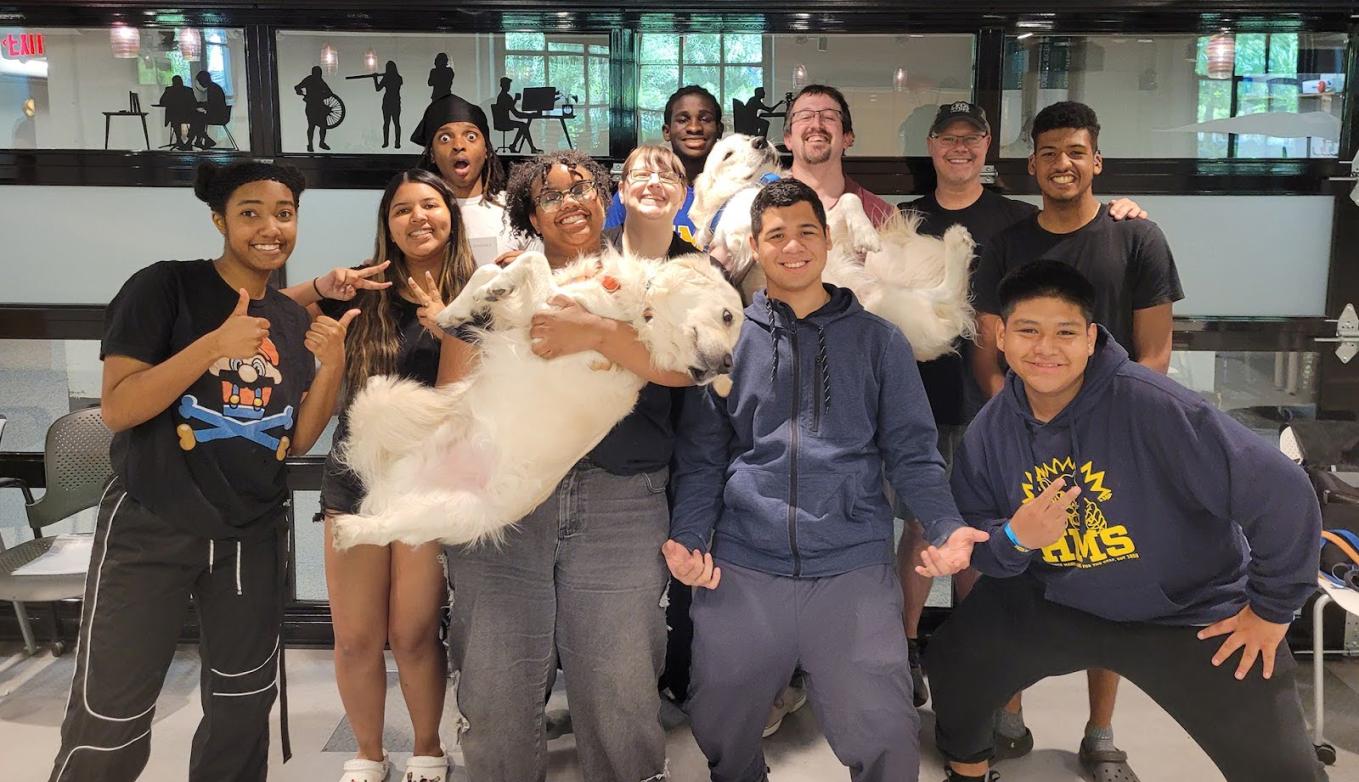
Group photo at the end of STEAMED. Left to right: Bijoux Eaddy; Bárbara Silva; Kaneil Foreshaw; Lucy Howard-Karp; Edgerton Center instructor Amanda Gruhl Mayer ’99 PhD ’08; David Evans; Carlos Rodriguez; Edgerton Center instructor Chris Mayer; Horace Mann science teacher Brian Gibson; Junior Mendez; and Elian Sanchez.
This June, a Maker workshop in the basement of MIT was abuzz with conversation, but the only sounds drifting out of the STEAMED program for high school students were humming drills and pounding hammers. That’s because STEAMED - which stands for Science, Technology, Engineering, Arts and Math Experience for Deaf and Hard of Hearing Students - was conducted entirely in American Sign Language (ASL).
Eight Deaf high school students worked for four days with Edgerton Center instructors (Amanda Gruhl Mayer ’99 PhD ’08 and Chris Mayer), a local teacher of the Deaf (Brian Gibson), and two ASL interpreters to learn new skills and flex their creativity. The students tackled a different project each day: building a mini pinball machine, creating a cryptex puzzle with a passcode, soldering an acrylic LED light box, and sewing circuits into a custom felt monster.
Encouraged to express themselves creatively through their work, some students took the projects in surprising directions. Junior Mendez used hieroglyphics on his cryptex dials, Bijoux Eaddy put a mouse head and ears at the top of her pinball machine, and Lucy Howard-Karp made a felt version of herself in the style of Hello Kitty that sparkles with LEDs.
Brian Gibson, the high school science teacher at Horace Mann School for the Deaf and Hard of Hearing, says, “I really love watching the kids have a plan of what they’re supposed to do, but kind of make it their own. So each project kind of turns out to be an individual project for each student.”
The first STEAMED workshop took place in June 2024, when four Deaf students built underwater remotely operated vehicles and raced them in an MIT pool. Upon their return to Horace Mann last Fall, they presented their vehicles and inspired four additional students to join them in the fun, doubling participation in this year’s workshops.
“I really came here to enjoy myself, to be here with the Deaf Community,” says Lucy Howard-Karp, “with teachers that are aware, adjusting the access that we need, providing everything we need to make something really cool and learn new things.” Lucy is a rising senior at Newton North High School and started visiting colleges this year. Rochester Institute of Technology (RIT) is high on her list because it houses the National Technical Institute for the Deaf (NTID), the first and largest technological college in the world for Deaf students.
Until this year, one of the largest sources of STEM funding for Deaf students was the Deaf Scientists Pipeline, a group of programs out of NTID that provided support to Deaf students from high school through their post-doctoral studies. Sadly, four out of five of those programs have been cut due to lack of NIH funding.
Gruhl Mayer, who created the STEAMED program through the MIT Edgerton Center, will earn her Masters degree this fall from Boston University in Language Education with a focus on ASL and Deaf Studies. “Deaf students don’t often have access to hands-on STEM learning. I started this program at MIT because I want to change that,” she says. “My favorite part of the STEAMED program is when I see the students starting to teach each other because they’ve developed confidence in their new skills.”
“Anything that’s hands-on is the best thing for my students,” says Gibson. He points out that his students often tell him they’re not good at science, but after they build hands-on projects they’re very proud of, he can say, “See, you did science!”
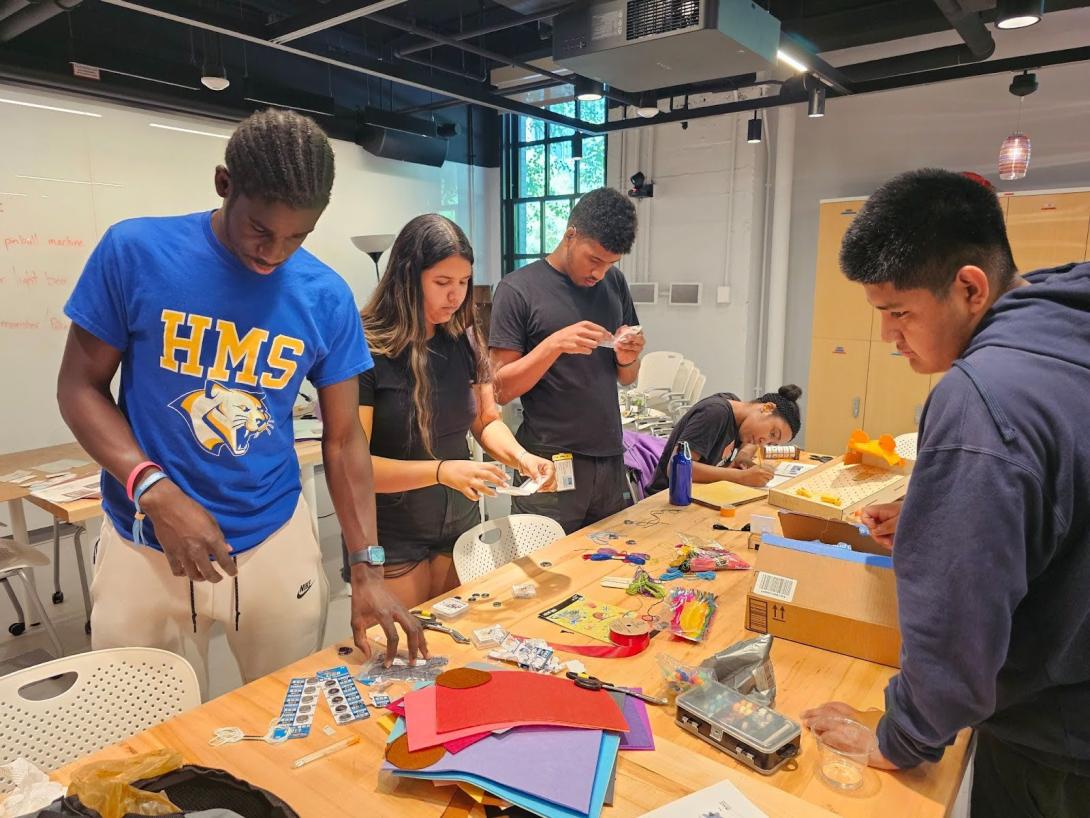
STEAMED students gather supplies for making their electronic textile project. Left to right: David Evans, Bárbara Silva, Elian Sanchez, Bijoux Eaddy, and Junior Mendez.






